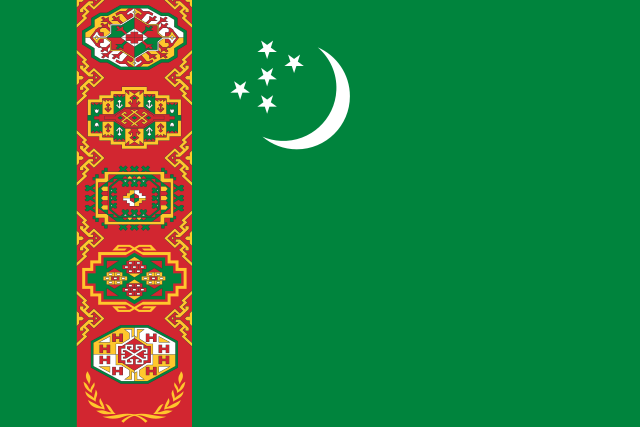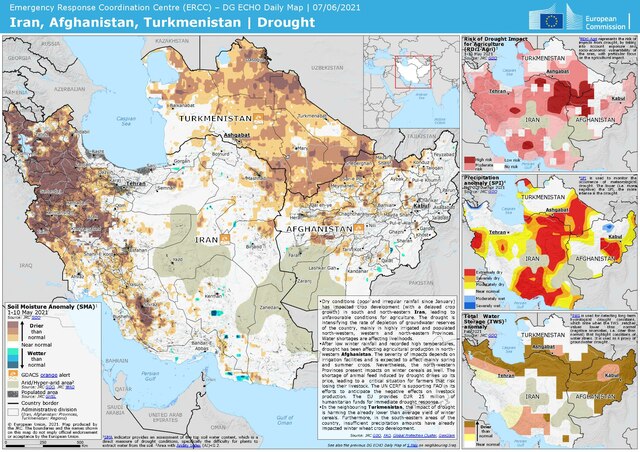









Turkmenistan is a country steeped in rich natural resources yet grappling with its authoritarian governance and economic challenges. This article delves into the multifaceted aspects of Turkmenistan, from its vast gas reserves to its unique cultural heritage.
An Overview of Turkmenistan
-
Geographical Context: Turkmenistan is situated in Central Asia, bordered by the Caspian Sea to the west, Iran to the south, and Uzbekistan and Kazakhstan to the north. It covers an area of approximately 491,210 square kilometers, with a predominantly desert landscape.
-
Political Landscape: The nation has been under authoritarian rule since gaining independence from the Soviet Union in 1991. The current president, Serdar Berdimuhamedov, succeeded his father, Gurbanguly Berdimuhamedov, in 2022, continuing a lineage of strongman leadership.
The Energy Giant
Natural Gas Reserves
-
Abundant Resources: Turkmenistan is home to the world's fourth-largest reserves of natural gas, estimated at around 17 trillion cubic meters. The Galkynysh gas field, one of the largest in the world, has become a focal point for energy exports.
-
Export Challenges: Despite its wealth in gas, Turkmenistan faces significant challenges in diversifying its export markets. Historically reliant on Russia and China, the country is exploring new partnerships to mitigate risks associated with over-dependence on a few partners.
Oil and Other Minerals
-
Oil Production: While natural gas takes center stage, Turkmenistan also has considerable oil reserves, estimated at 600 million metric tons. The country is working to enhance its oil production capabilities, though it remains less significant than gas.
-
Mineral Wealth: In addition to hydrocarbons, Turkmenistan is rich in minerals, including sulfur, potassium, and various rare earth elements, which could provide alternative economic opportunities.
Cultural Heritage and Society
Ethnic Composition
- Diverse Ethnicity: Turkmenistan's population is predominantly Turkmen, making up about 85% of the total. The remaining population comprises Uzbeks, Russians, and other ethnic groups, contributing to a rich cultural tapestry.
Language and Literature
- Official Language: The official language is Turkmen, which belongs to the Oghuz branch of the Turkic languages. The government promotes Turkmen culture through literature, music, and art, although much of it is state-controlled.
Traditional Practices
- Cultural Festivals: Turkmenistan is known for its traditional festivals, such as the annual Horse Day, celebrating the importance of horses in Turkmen culture. The Akhal-Teke horse breed, renowned for its endurance and beauty, holds a special place in the national identity.
Economic Challenges and Opportunities
Economic Structure
- State-Controlled Economy: The economy is heavily centralized, with the government controlling most sectors. While this approach has led to significant investments in infrastructure, it has also stifled entrepreneurship and innovation.
Youth Unemployment
- Rising Concerns: Youth unemployment remains a pressing issue, with many young people facing limited job opportunities. As the government attempts to modernize the economy, there is growing pressure to create more diverse employment avenues.
The Role of Foreign Investment
- Attracting Investors: Turkmenistan is actively seeking foreign investment to develop its energy sector and diversify its economy. However, concerns about governance and human rights remain significant barriers.
Environmental Considerations
Desertification and Water Scarcity
- Environmental Issues: Turkmenistan faces serious environmental challenges, including desertification, water scarcity, and pollution. The over-extraction of water from the Amu Darya River for agricultural purposes has led to significant ecological degradation.
Renewable Energy Initiatives
- Green Energy Prospects: In recent years, Turkmenistan has begun exploring renewable energy options, including solar and wind power, as part of its commitment to sustainable development. This could potentially reduce its reliance on fossil fuels.
International Relations and Geopolitics
Diplomatic Balancing Act
- Neutrality Policy: Turkmenistan maintains a policy of neutrality in international conflicts, which has allowed it to navigate complex relationships with major powers, including Russia, China, and the United States.
Regional Dynamics
- Central Asian Relations: The country is working to strengthen ties with its Central Asian neighbors, particularly in trade and energy cooperation. However, historical tensions, particularly with Uzbekistan, remain a challenge.
The Caspian Sea Debate
- Strategic Importance: Control over the Caspian Sea's resources remains a contentious issue among bordering nations. Turkmenistan's strategic positioning enhances its geopolitical importance in regional energy discussions.
Human Rights and Governance
Authoritarianism and Freedoms
- Human Rights Record: Turkmenistan has consistently ranked poorly on global human rights indices, with reports of repression, censorship, and limited freedoms of speech and assembly. The government’s grip on power remains a significant concern for international observers.
Civil Society Challenges
- Limited Activism: Civil society organizations operate under strict government oversight, limiting their ability to effect change. Despite these constraints, there is a burgeoning underground movement advocating for reform.
Conclusion: A Nation at a Crossroads
Turkmenistan stands at a pivotal moment in its history, balancing its rich natural resources with pressing domestic and international challenges. As it navigates the complexities of economic reform, governance, and environmental sustainability, the nation’s future will depend on its ability to adapt and engage with the broader global community.
The path ahead is fraught with challenges, but with its unique position and resources, Turkmenistan has the potential to redefine its narrative on the world stage.
